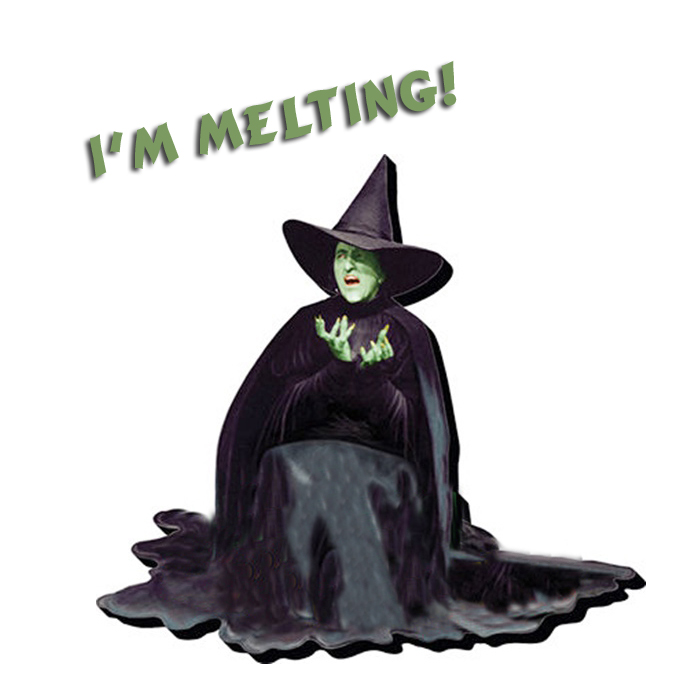Just like water melted the Wicked Witch of the West in The Wizard of Oz, acid in what you eat and drink could be melting (eroding) your tooth enamel.
Although tooth enamel (the hard, protective surface of the tooth) is the hardest substance in the body, it is not living tissue. The cells that create enamel as a tooth grows die off when the tooth erupts. This means that once the enamel is gone, the body can’t ‘re-grow’ it the way you would a broken bone.
Dental erosion is a prevalent condition worldwide that affects children and adults alike, and is becoming more common, thanks in large part to how diets have changed, and in particular, the increased consumption of carbonated soft drinks and sports drinks.
Erosion is caused by exposure of teeth to non-bacterial acids, resulting in the loss of enamel. Unlike bacteria-caused acid that results in localized cavities, acid erosion affects the whole tooth surface. It comes from exposing teeth to foods and drinks that have a low pH (a value below 7, which is neutral on the pH scale). This acid bath softens and dissolves tooth enamel, making it more easily worn away by chewing and grinding or by abrasion with brushing and using (abrasive) whitening toothpastes as well as tooth whitening products.
Eroded teeth can become translucent, yellow (that’s the dentin showing through), develop rounded edges, and become sensitive to hot and cold foods and drinks. The sensitivity occurs because the dentin, and the nerves in the teeth, are no longer protected by the protective ‘shell’ of enamel.
Dental erosion does not respond well to remineralization techniques, the way early cavities can. It is not localized and usually involves the softening of enamel in ALL teeth in the mouth.
With the increase in dental erosion caused by our changing eating habits, toothpaste manufacturers have been quick to offer toothpastes aimed at those who have eroded enamel or sensitive teeth. In a 2017 study, researchers compared 9 different toothpastes, all claiming to be anti-erosive and/or desensitizing. The results of their experiment showed that all tested toothpastes causes varying amounts of surface enamel loss and none provided protection against abrasion or erosion and are not useful as a stand-alone treatment.
The most important factor in treatment is a change in diet. As the study author stated, “Dental erosion is multifactorial. It has to do with brushing and above all with diet. Food and drink are increasingly acidic as a result of industrial processing.” 1
While there are no products on the market [watch for an upcoming newsletter article for the latest research on this] that reverse dental erosion and/or build new enamel, it IS possible to limit exposure to acidic substances or sources. The pH value below which teeth are at risk is 5.5 2.
One of the worst – and most common – offenders that will ‘melt’ your teeth is carbonated soft drinks (including sports drinks) because they contain phosphoric acid. Average soft drink consumption in the US is 24 oz / day. 3, 4 The average pH of soda is about 2.5-2.8. That’s only somewhat less acidic than battery acid (which weighs in at about 1.0).
Food and Beverage sources of acid:
Some of the worst beverages (pH value – or range – shown) 5
Cranberry juice 2.5
Coffee 2.4 – 3.3
Coke & Pepsi 2.4
Dr. Pepper 2.9
7-Up 3.4
Orange juice 3.7
Grape juice 3.4
Root Beer 3.8 – 4.4
Beer 4.0 – 5.0
Black tea 4.2
Some of the worst foods are: 6, 7, 8
Cranberry sauce 2.3
Ketchup 3.7
Pickles 2.5 – 3.0
Sauerkraut 3.1 – 3.7
Tomatoes 3.7 – 4.7
Fermented vegetables 3.9 – 5.1
These are all external sources of acid that can erode enamel with prolonged or repeated exposure.
Internal source of acid –
There’s another source of acid that’s internal: stomach acid. If you have GERD (acid reflux) or an eating disorder such as bulimia, or any condition that causes vomiting, the regurgitated stomach acid (with a pH of 1.5 – 3.5) can quickly begin eroding tooth enamel. To minimize that, rinse your mouth with water and do not brush for at least 30 minutes, so that your teeth can recover from the softening of the acid.
Do you sip soda?
The common habit of sipping a soda throughout the day bathes your teeth in acid, which accelerates erosion. Your saliva – the mouth’s natural way of cleansing your teeth – can’t keep up with the constant sipping.
The best solution is to drink your soda all at once, then rinse your mouth with water. Or you can drink your soda with a meal and rinse your mouth with water after the meal. Following up with sugar-free gum made with xylitol or erythritol will help fight cavity-causing bacteria that may be started by the sugar contained in soda (or food) and can also stimulate saliva production for added protection.
Prevention Tips –
Avoid or reduce exposure to acidic substances. Better yet – wean yourself off soda and transition to less sugary and less acidic drinks. As you are probably aware, sugar is highly addictive – “the other white powder”. It is one big reason that people keep drinking soda and eroding their teeth.
The quick ‘go to’ answer – Rinse your mouth with water, removing as much of the highly acidic food or beverage as possible, as quickly as possible.
Chew sugar-free gum made with xylitol or erythritol (these are natural sugar alcohols, not artificial sweeteners like aspartame, saccharine or sucralose) to stimulate saliva and help prevent cavities from the sugar in your foods or drinks.
Don’t swish soda around in your mouth because you like the feeling of the bubbles or you want to get more flavor out of it. You’re just adding to the acid overload.
After consuming acidic foods or beverages that soften tooth enamel, wait at least 30 minutes before you brush your teeth (using a soft brush), so that you don’t damage the vulnerable enamel further.
Drinking acidic beverages through a straw may help, but research shows it offers only a slight improvement.
And the next time you reach for that soda… Think of the melting witch ….
In an upcoming newsletter: The latest research on “healing” enamel and stem cells.
References:
1 https://www.nature.com/articles/s41598-017-18154-8
2 Hicks J, Garcia-Godoy F, Flaitz C. Biological factors in dental caries enamel structure and the caries process in the dynamic process of demineralization and remineralization (part 2). J Clin Pediatr Dent. 2005;29(2):119-24.
3 Gambon DL, Brand HS, Veerman EC. Dental erosion in the 21st century: what is happening to nutritional habits and lifestyle in our society? Br Dent J. 2012;213(2):55-57.
4 285-290. 8. Tahmassebi JF, Duggal MS, Malik-Kotru G, Curzon ME. Soft drinks and dental health: a review of the current literature. J Dent. 2006;34(1):2-11.
5.https://www.ada.org/en/~/media/ADA/Public%20Programs/Files/JADA_The%20pH%20of%20beverages%20in%20the%20United%20States
6 Clark DC, Woo G, Silver JG, Sweet D, Grisdale JC. The influence of frequent ingestion of acids in the diet on treatment for dentin sensitivity. J Can Dent Assoc. 1990 Dec;56(12):1101-3.
7 Jain P, Nihill P, Sobkowski J, Agustin MZ. Commercial soft drinks: pH and in vitro dissolution of enamel. Gen Dent. 2007 2007 Mar-Apr;55(2):150-4; quiz 5.
8 Lussi A, Jaeggi T. Chemical factors. Monographs Oral Sci. 2006;20:77-87.


How does apple cider vinegar diluted in water affects teeth?